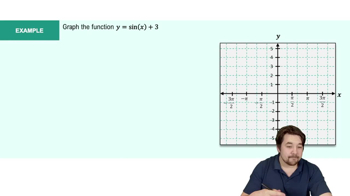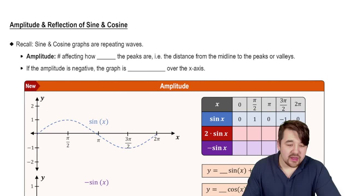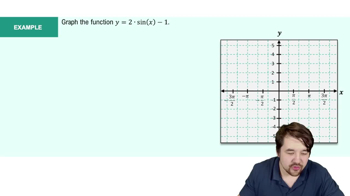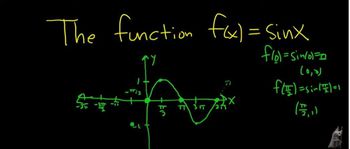Table of contents
- 0. Review of College Algebra4h 43m
- 1. Measuring Angles39m
- 2. Trigonometric Functions on Right Triangles2h 5m
- 3. Unit Circle1h 19m
- 4. Graphing Trigonometric Functions1h 19m
- 5. Inverse Trigonometric Functions and Basic Trigonometric Equations1h 41m
- 6. Trigonometric Identities and More Equations2h 34m
- 7. Non-Right Triangles1h 38m
- 8. Vectors2h 25m
- 9. Polar Equations2h 5m
- 10. Parametric Equations1h 6m
- 11. Graphing Complex Numbers1h 7m
4. Graphing Trigonometric Functions
Graphs of the Sine and Cosine Functions
Problem 4.9a
Textbook Question
Match each function with its graph in choices A–I. (One choice will not be used.)
y = sin (x - π/4)
A. <IMAGE> B. <IMAGE> C. <IMAGE>
D. <IMAGE> E. <IMAGE> F. <IMAGE>
G. <IMAGE> H. <IMAGE> I. <IMAGE>
 Verified step by step guidance
Verified step by step guidance1
Identify the basic shape and properties of the sine function, which has a periodic wave-like form oscillating between -1 and 1.
Understand the effect of the phase shift in the function y = sin(x - \frac{\pi}{4}). This represents a horizontal shift to the right by \frac{\pi}{4} units.
Look for a graph among the choices that shows a sine wave starting at a phase shift of -\frac{\pi}{4} on the x-axis. This means the wave, which usually starts at 0, should start at -\frac{\pi}{4}.
Check the amplitude and period of the sine function in the graph. The amplitude should be 1 (distance from the center line to the peak), and the period should be 2\pi, as there are no changes to these in the given function.
Eliminate any graph that does not start at -\frac{\pi}{4} or does not maintain the standard sine wave properties of amplitude 1 and period 2\pi.
Was this helpful?

 5:53m
5:53mWatch next
Master Graph of Sine and Cosine Function with a bite sized video explanation from Nick Kaneko
Start learningRelated Videos
Related Practice


















